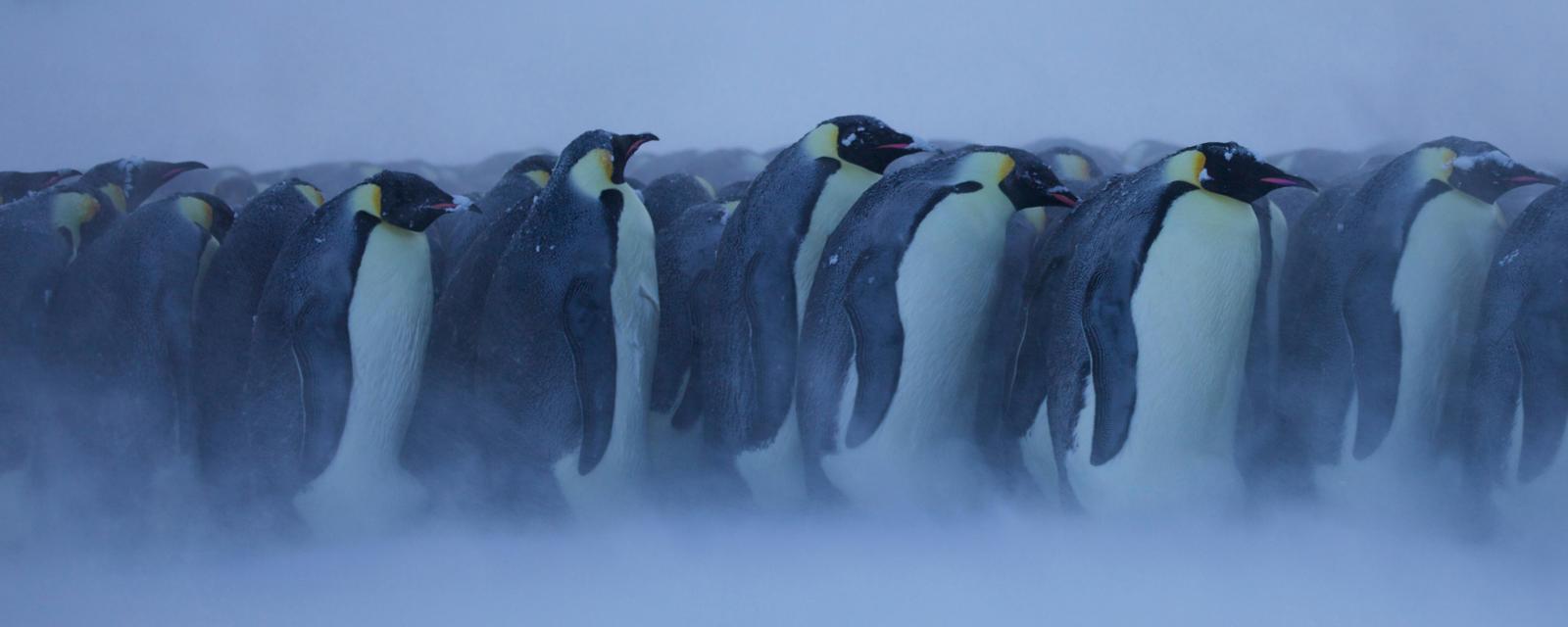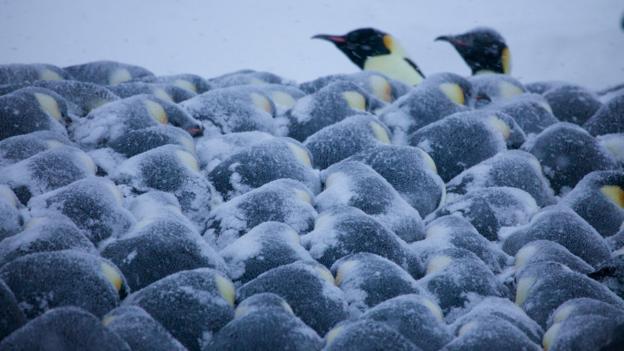
They live in the coldest place on Earth, but emperor penguins can sometimes overheat
By Melissa Hogenboom
7 November 2015
Emperor penguins are one of nature's
great survivors. They can endure the frigid cold of an Antarctic winter,
when temperatures plummet to -20 °C or below.
To prevent
themselves freezing to death, they huddle together in tightly-packed
groups to conserve heat and shelter themselves from the intense winds.
Now it seems these huddles can actually be too good at keeping the emperor penguins warm.
In
the time-lapse below, you can see that penguin huddles constantly
rotate. The most obvious behaviour is that penguins on the outskirts
regularly muscle their way inside the huddle.
That is easily understandable. Those on the outside of the huddle face the direct hit of Antarctica's icy wind chill.
But
there is something else going on. The penguins on the inside get too
hot, so after a while they need a little room to cool off.
Penguins seeking to lose some body heat actually break huddles apart, say researchers in a new paper in the journal Animal Behaviour.
Within the huddles, penguins barely lose any heat. The little they lose comes from their heads, or from breathing in icy air.
That means they regularly find themselves in toasty temperatures of 37.5 °C, which is significantly higher than they like.
"As
a consequence, birds face the paradox that in a cold physical
environment they sometimes need to dissipate excess heat," the team
report.
By closely analysing penguin huddles, the team discovered
that each huddle is constantly changing, both in response to the outside
temperature and in response to penguins overheating.
"The regular growth and decay of huddles operates as pulses through which birds gain, conserve or lose heat," the team write.
Before then, studies looking at penguin huddles considered them as static structures, which we now know is not the case.
"Birds in need of warmth join huddles," says lead author André Ancel of
the French National Centre for Scientific Research in Strasbourg. "When
their surface temperatures reach positive values, they break the
huddle. Once outside, they can eat fresh snow and clean their feathers.
When they 'feel cold', they again aggregate."



















No comments:
Post a Comment